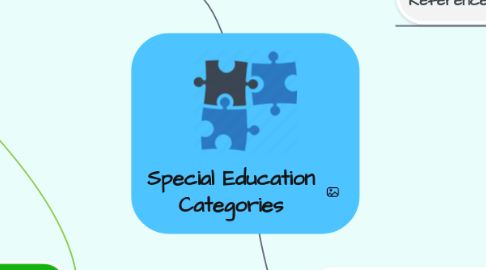
1. (20%) Low Incidence Disabilities
1.1. Developmental Delay
1.1.1. Early Intervention
1.1.2. Behavioural Therapy
1.1.3. Speech and Language Therapy
1.2. Mental Retardation
1.2.1. Help in developing adaptive skills
1.2.2. Differentiated Instructions
1.2.2.1. Be as concrete as possible
1.2.2.2. Break longer, new tasks into small steps
1.2.2.3. Give the student immediate feedback
1.3. Traumatic Brain Injury
1.3.1. Give the student more time to finish schoolwork and tests
1.3.2. Show the student how to perform new tasks. Give examples to go with new ideas and concepts
1.3.3. Have consistent routines. This helps the student know what to expect.
1.4. Hearing Impairments
1.4.1. Assistive Technology
1.5. Visual Impairments
1.5.1. Provide E-text with tracking support, highlighting or auditory support
1.5.2. Use of low-vision aids (hand-held magnification with regular text)
1.5.3. Brail literacy
1.6. Deaf-Blindness
1.6.1. Intervener
1.7. Deafness
1.7.1. Assistive listening devices
1.7.1.1. Alerting devices
1.7.2. Use American Sign Language (ASL) interpreter
1.7.3. Volunteer notetaker
1.7.4. Use visuals and captions for any videos
1.8. Orthopaedic Impairments
1.8.1. Assistive Technology
1.9. Autism Spectrum Disorders
1.9.1. Make sure directions are given step-by- step
1.9.2. Have consistent routines and schedules
1.9.3. Give positive feedback and lots of opportunities for practice
1.10. Multiple Disabilities
1.10.1. Allow partial participation, as necessary
1.10.2. Assistive Technology
1.11. Other Health Impairments
1.11.1. ADD / ADHD
1.11.1.1. Post rules, schedules, and assignments
1.11.1.2. Provide regularly scheduled breaks
1.11.1.3. Make sure directions are given step by step
1.11.1.4. Let the student do work on a computer
1.11.1.5. Fidget Box (with things to fidget with)
2. General Accommodations and Modifications
3. General Accommodation and Modifications
4. (80%)High Incidence Disabilities
4.1. Learning Disabilities
4.1.1. Dyslexia:
4.1.1.1. Phonological awareness exercises might be used at school/home to create important foundational reading skill.
4.1.1.2. Audio books
4.1.1.3. Assistive Technology
4.1.1.3.1. Comprehensive Technology
4.1.1.3.2. Planning, Time Management, and Organization
4.1.1.3.3. Text to Speech
4.1.1.3.4. Speech to Text
4.1.1.3.5. Audio Recorders
4.1.1.3.6. Word Prediction, Spell Checks, and Grammar Checks
4.1.2. Possible Interventions
4.2. Emotional Disturbance
4.2.1. Conduct Disorder
4.2.1.1. Training in problem solving skills
4.2.1.2. Community-based services
4.2.2. Providing students with positive behavioral support (PBS)
4.2.3. Medication and psychosocial treatment
4.3. Speech and Language Impairment
4.3.1. Facilitated Communication
4.3.2. Computer Based Instruction
4.3.3. Alternative Communication (AAC)
4.3.4. Speech and Language Therapy
4.3.5. Narrative Interventions
4.4. Mild Intellectual Disabilities
4.4.1. Written, verbal and pictoral forms of communication as well as gestures and demonstrations are helpful

